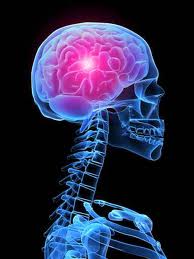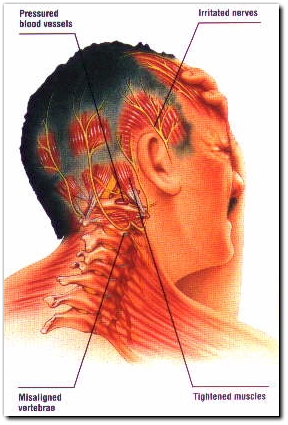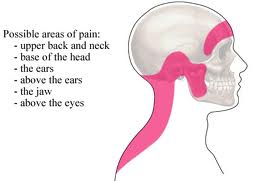Headaches
- Home
- Head & Neck
- Common Ailments
- Headaches
We have included headaches in the “neck" section, as headaches are often caused by problems with the neck.
Headaches are a complex subject. The information here should be used as a guide and to educate on how physiotherapy treatment can be beneficial.
If your headaches are persistent, unremitting or associated with trauma or referred symptoms then you should seek medical attention from your GP.

The brain itself is not sensitive to pain because it lacks pain receptors. The pain is caused by a disturbance of the pain sensitive structures. Structure that can cause a 'headache' include;
- Blood vessels
- Meninges
- Cranial nerves
- Skull
- Muscles
- Arteries and veins
- Eyes
- Ears
- Sinus’

There are a number of reasons as to why a person will experience a headache. There is no single cause however those causes that have been identified fall into 2 categories:
1. Tension Headaches
These account for at least 70% of headaches. These types of headaches are not age or sex specific, however they commonly affect adolescents. Tension headaches are normally isolated incidents however for some people they can be chronic. They occur due to the muscles of the neck contracting. Reasons as to why these muscles should contract include:
Stress
Fatigue
Alcohol or Tobacco
Posture
Eye strain e.g. excessive VDU use or incorrect glasses
Pre-menstrual headaches

2. Migraine Headaches
These account for 20% of headaches experienced. These occur due a constriction in the blood vessels supplying the neck and head, and as a result these areas receive a reduced blood flow. Migraines are more likely to affect women rather than men and are often chronic. Below are a few factors associated with migraines:
Family history
Alcohol use
Lack of sleep
Prolonged muscle tension and stress
Certain foods have been identified with migraines these include: caffine, chocolate, nuts, foods containing preservatives and artificial sweetners
There are a number of different classification systems for headaches. The most well recognised if that of the International Headache Society.

Headaches will affect people differently. There are a number of common symptoms that will vary in their intensity and pattern. They include:
- Pain experienced in the area of the head and neck, across the back of the head; described like a ‘tight band’ or pain experienced in either temple or eyes
- Migraine headaches are described as a throbbing or pulsating feeling and usually on one side of the head
- Migraine pains are often accompanied by other symptoms such as nausea, vomiting, vertigo-like feeling and visual disturbances
- Migraines are sensitive to loud noises and light and commonly last one to two days.
The advice below should help ease your symptoms. If you are struggling then physiotherapy can be an extremely beneficial. In some instances where headaches are persistent and unremitting then it is advisable that you see your GP as further investigations and treatment may be needed.
- Posture and Ergonomics – these 2 factors needs addressing in almost every case of headaches. Physiotherapy can help you to become more posture aware and advise you on correct ergonomics.
- Exercises – it is important to keep you neck moving, even though it may be painful to begin with and there are certain exercises that can help with mobilising the muscles and structures around the neck that may have become stiff or tight
- Pain Control – simple medication can be useful to ease the symptoms of a headache. See your GP for correct education about the right kind of pain relief for you.
- Heat – people often find heat beneficial to the areas where the muscles feel tight.
- Soft tissue mobilisation and manual therapy – people find these physiotherapy techniques useful to help them manage their headaches.
- Acupuncture – can be beneficial for acute and chronic headaches.
